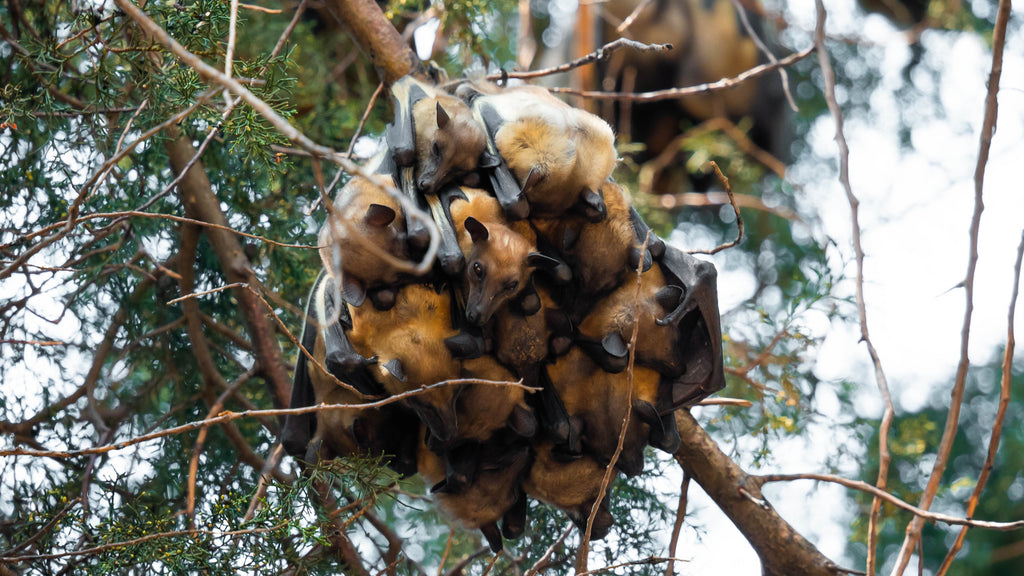Author and bat expert Dan Riskin shares the extraordinary encounter he had with the bat who inspired Fiona the Fruit Bat, and the message of self-discovery she represents.
"This might sound weird, but the main message in my book is one I learned from a bat in Costa Rica.
I was a bright but aimless kid. I wasn’t big on nature. I wasn’t big on science. I hadn’t found my calling. But then in high school I read the right book at the right moment. It was by M. Brock Fenton, one of the world’s greatest bat gurus, and it was amazing. These little-known animals were so full of surprises, and there were so many hilarious adventure stories about going to far-flung Africa or the Amazon to learn about them. (And frankly, many of the details about the sex lives of those bats simply blew my high-school mind!) I was hooked.
I was officially a bat-fan.
When I started my Master’s degree, I went to Costa Rica to check out some obscure bats with suction cups on their wrists and ankles—they use them to stick to leaves! The morning after I arrived, another researcher took me across the river to a small cave he said would have bats in it. When we got there, I had to lie down and slide on my back into the cave, like you would roll under a car when you change the oil. I slid in, and the ground was wet and brown. At first I thought “mud” but I realized quickly that this was bat guano. It was all in my hair, and going down the back of my shirt! But I heard the squeaks and needed to see what was in there, so I pressed on.
That’s when I saw her.
The bat—who is now synonymous in my mind with Fiona— was unmistakable – a short-tailed fruit bat, Carollia! I’d read all about these creatures. It was like seeing a celebrity whose poster you have on your wall at home. I was in awe.
This bat looked down at me, with its mouth open, and teeth showing—not in an angry way, but almost like an open-mouthed puppy smile. It felt like the world stood still. I was in love. I loved this bat, and I loved what I’d gone through to get to this bat, and maybe most of all, I loved who I felt like I was becoming as I looked at that bat. I had changed. I had found my calling. I wanted to be a bat biologist.
The next 20 years had plenty of bat caves and plenty of far-flung tropical destinations. I’ve seen more than a hundred different species of bats now, all over the world, but that first encounter with Fiona set it all off. That one bat unlocked something inside me, and I slid out of that cave with a sense of purpose I hadn’t had before.
Short-tailed fruit bats are among the best studied bats in the world, but like all creatures, they’re also full of mystery. We know what they eat, we know how they echolocate, and how they change as they develop. I even once did a biomechanics study about how they land upside down, where I made high-speed videos of them while I measured how hard their feet hit the ceiling (very gently, it turns out!).
For this book, I’ve worked with Illustrator Rachel Qiuqi and my team at Greystone to keep the details of Fiona’s experience as scientifically accurate as possible—from her roosting posture, to the identities of the other denizens of her cave, to the way she figures out how to echolocate. Carollia bats don’t echolocate until right about the time they start flying—around three weeks of age. I have always wondered what their sensory experiences are like leading up to that point. And although I’ve taken some liberties with anthropomorphizing dialogue, I really think what Fiona experiences is true-to-life. She knows how to make noise and she hears sounds, but she doesn’t know how to use those skills together for echolocation until the day she learns to fly.
I hope that kids (and their families) will discover how cute bats are through this book, but the real message is about learning when to stop looking for answers from other people and to listen to yourself. My passion for bats is an extension of what I learned in that Costa Rican cave – the value of doing something scary and growing as a result. Fiona finds her calling, just like I did. And it comes when she learns to listen to her own voice. That’s the lesson I want to share with the young readers of this book."
—Dan Riskin



